| Title | Image | Page Summary: |
|---|---|---|
| Lairesse - Principles | ||
| Lairesse - Principles - Page 1 |
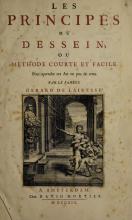
|
This is the title page of Gerard de Lairesse's book, "The Principles of Drawing; or, a Short and Easy Method to Learn This Art in a Short Time," published in Amsterdam in 1719. It introduces the book as a guide to quickly learning the art of drawing, authored by the renowned artist, Gerard de Lairesse. |
| Lairesse - Principles - Page 2 |

|
|
| Lairesse - Principles - Page 3 |
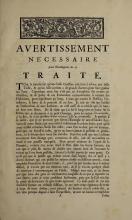
|
The author explains that the aim of the treatise is to instruct readers in the art of drawing by writing in a straightforward manner. Although the art of drawing is vast and challenging to master, the author wishes to share new insights and encourage readers despite its complexity. The author acknowledges the challenges and doubts faced in execution and aims to inspire others by pursuing this noble art form against all odds. |
| Lairesse - Principles - Page 4 |
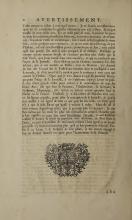
|
The author expresses gratitude to God for enlightenment and guidance in their work. They acknowledge potential criticism but highlight the utility and straightforward style intended for young audiences to learn the fine arts. The text serves as a preface to a booklet on the principles of various arts, emphasizing practicality and the inclusion of illustrative figures. |
| Lairesse - Principles - Page 5 |
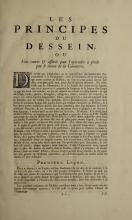
|
The text outlines the essential relationship between Geometry and Drawing, emphasizing that understanding shapes and lines is foundational to learning the art effectively. It suggests that students start by mastering basic principles and recommends a structured timeline for developing artistic skills, including learning to read, write, and even Latin, to fully engage with arts or sciences. The author stresses the importance of early and focused study under a skilled teacher to ensure long-term success in drawing. |
| Lairesse - Principles - Page 6 |
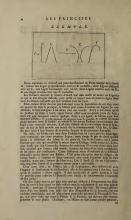
|
The text begins by introducing a diagram guiding students in understanding basic geometric lines and shapes. It emphasizes not just theoretical knowledge but practical repetition, with guidance provided by a Master. The passage also discusses the differences in student talent and technique, suggesting that early education and adaptive teaching methods are crucial to artistic development. |
| Lairesse - Principles - Page 7 |
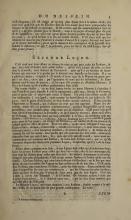
|
The text guides teachers to handle repetition patiently, recognizing the challenges beginners face while finding joy as students progress. It emphasizes nurturing student enthusiasm, providing concise instructions, and allowing practice in a supportive environment. The importance of gradual learning, personalized teaching approaches, and fostering friendly competition among students is highlighted. |
| Lairesse - Principles - Page 8 |
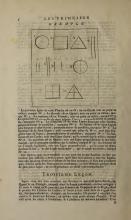
|
The page describes a drawing exercise featuring basic geometric shapes like circles, squares, and triangles, along with intersecting lines. It is structured to help students practice and become skilled at drawing these forms accurately. The text promises rewards and camaraderie among students to motivate their learning and mastery of drawing. |
| Lairesse - Principles - Page 9 |
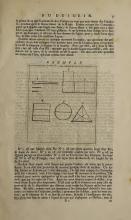
|
The text discusses challenges in using slates versus paper for drawing and introduces a lesson where students learn to measure shapes accurately. It presents new examples like lines, squares, circles, and triangles to teach measurement and drawing skills. The importance of understanding art terms, similar to learning the alphabet in reading, is emphasized for developing drawing skills. |
| Lairesse - Principles - Page 10 |
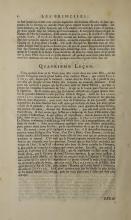
|
The text emphasizes the importance of guiding students in art with empathy rather than harshness, noting that skilled instruction helps them appreciate and develop their talents. It draws parallels between students and children, stressing that good education is rare and necessary. The text also lauds the power of natural talent when combined with proper teaching, encouraging a gradual progression from simpler to more complex artistic endeavors. |
| Lairesse - Principles - Page 11 |
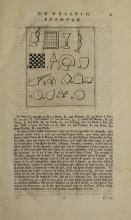
|
The text describes various objects represented by geometric figures and emphasizes the foundational shapes used in drawing. It highlights the importance of understanding basic forms to improve one's artistic skills and the necessity of practicing these elements to achieve accuracy in art. Key principles include drawing from simple forms and ensuring the boldness of strokes, which are crucial for mastering the art. |
| Lairesse - Principles - Page 12 |
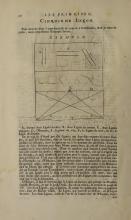
|
The text instructs on achieving boldness and accuracy in drawing through understanding lines such as parallels and the elements of perspective like the horizon and point of view. It emphasizes clarity in teaching, using concise examples and comparisons to prevent confusion. Advanced composed figures will be introduced later as the student's understanding develops. |
| Lairesse - Principles - Page 13 |

|
This text discusses different perspectives on art and drawing, emphasizing the importance of learning and understanding the distance lines related to the horizon and earth in drawings. It suggests using illustrated books to inspire young students, encouraging them to become skilled by learning from the examples of renowned masters. Additionally, it highlights the benefits of arranging elements according to art's rules and adapts teaching methods to suit students’ varying levels of enthusiasm. |
| Lairesse - Principles - Page 14 |
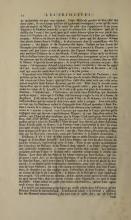
|
The text discusses the importance of a methodical approach to learning painting, emphasizing the significance of developing skills through understanding outlines and figures before handling complex aspects like painting human figures. It criticizes how some overlook intellectual and artistic teachings in favor of physical exercises. The passage advocates for a balanced education that values art and intellect, suggesting that a cheerful disposition is more beneficial for success in painting than a melancholic one. |
| Lairesse - Principles - Page 15 |
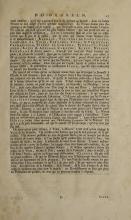
|
The text discusses the role of nature versus instruction in art, highlighting that lively and joyful dispositions have greatly contributed to the mastery of art by famous painters like Raphael and Leonardo da Vinci. It argues that engaging youth in studies and sciences is crucial, as this lays the foundation for future prosperity. Education is portrayed as essential for both personal and societal development, contrasting with the negative impact of luxury and poor upbringing. |
| Lairesse - Principles - Page 16 |
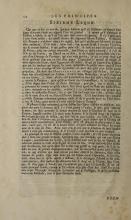
|
This text emphasizes the importance of understanding the fundamentals of Drawing to effectively judge and appreciate art. It criticizes those who acquire art without knowledge and discusses the appropriate techniques for using tools like charcoal and pencils. The author stresses the necessity of starting with good outlines and carefully observing distances to create proportionate works. |
| Lairesse - Principles - Page 17 |
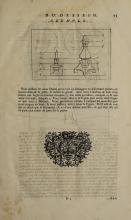
|
This text provides instructions on how to draw two objects by breaking them down into distinct parts. It emphasizes the importance of using geometry for accuracy in drawing, with specific steps involving using charcoal to trace lines and shapes. The text underlines the necessity of precise geometric construction in art. |
| Lairesse - Principles - Page 18 |
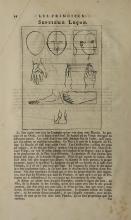
|
The text provides instructional guidance on replicating illustrations seen in a drawing plate. It describes how to proportion facial features and other body parts accurately. The lesson emphasizes careful observation and replication to ensure proportionate drawings. |
| Lairesse - Principles - Page 19 |
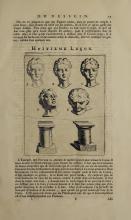
|
The text discusses advancing from drawing empty figures to adding depth and creating solid bodies through shadowing and hatching techniques. Students are instructed to practice with red pencils, focusing on clear hatching without blending, and to take their time studying shadows and drawing step by step. The passage emphasizes the importance of careful attention and restraint in art, which is necessary for mastery. |
| Lairesse - Principles - Page 20 |
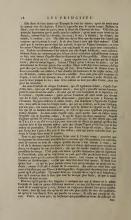
|
The text explains methods for properly drawing and shading using charcoal and red crayon, emphasizing light and shadow. It highlights the importance of precise lines and hatching techniques to create lifelike representations of objects and figures. The text also describes concepts like 'roundness' and 'half-tones' related to light and shadow distribution. |
| Lairesse - Principles - Page 21 |
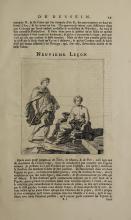
|
The text discusses the importance of properly handling drawing tools and techniques for effective artwork. It emphasizes understanding perspective and the use of light and precise lines when sketching figures. There is also practical advice for students on starting with the right side of a figure to ensure clear visibility of the drawing process. |
| Lairesse - Principles - Page 22 |
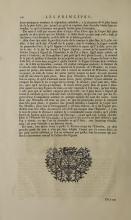
|
The passage explains methods for students learning drawing, emphasizing the importance of replicating models at the same size for practice. It details techniques for accurately placing body parts on the figure and suggests maintaining silence to improve focus and accuracy in sketching. The importance of comparing sketches with models for better observation and executing successful outcomes is highlighted. |
| Lairesse - Principles - Page 23 |
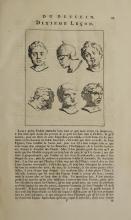
|
This lesson discusses the skills a student must demonstrate when drawing figures, including understanding the effects of light and shadow. Students must place their models correctly concerning the light source to ensure shadows are clear and depict figures at eye level. Practical application techniques such as holding the sketchpad are mentioned as already practiced by others. |
| Lairesse - Principles - Page 24 |
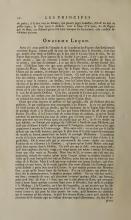
|
The text from Gerard de Lairesse's "The Principles of Drawing" describes an advanced drawing technique using black and white crayons on blue or gray paper. It emphasizes practicing with plaster models to master illumination and shading. The author recommends thorough learning of efficient methods, and warns against rushing into painting before mastering drawing skills. |
| Lairesse - Principles - Page 25 |
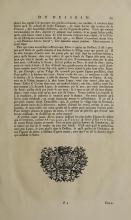
|
The text emphasizes dedicating oneself to the art of drawing, advocating for the purchase of useful resources like books and prints. It describes the step-by-step process of drawing a face, highlighting how to capture the resemblance of expressions using structured methods. Additionally, it encourages students to improve their skills by drawing famous plaster figures before progressing to drawing from nature. |
| Lairesse - Principles - Page 26 |
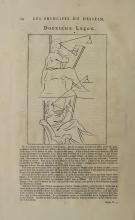
|
The passage emphasizes the importance of posture and eye alignment when drawing objects of different sizes and heights. It advocates for practice in judging proportions and suggests that students evaluate their talents to succeed in the art world. Additionally, it highlights the role of skilled teachers and supportive mentors in cultivating artistic skills. |
| Lairesse - Principles - Page 27 |
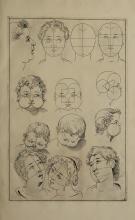
|
The image contains instructional illustrations for drawing human heads, showing different perspectives and guides for facial features. It highlights the use of geometric lines for proportions. Part of "The Principles of Drawing" by Gerard de Lairesse. |
| Lairesse - Principles - Page 28 |

|
The page contains only illustrations and no text to summarize. |
| Lairesse - Principles - Page 29 |
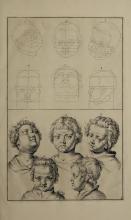
|
The page contains illustrations showing both the geometric framework and finished sketches of children's faces. It serves as a didactic tool for understanding proportions and achieving accurate human facial representations in drawing. No text is present, only images demonstrating techniques. |
| Lairesse - Principles - Page 30 |
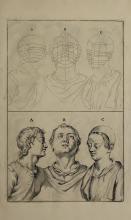
|
The image contains letters labeling different figures in the drawing. It serves as a guide for understanding the construction and proportions of drawing heads. The labeling seems to correspond to different perspectives or techniques demonstrated. |
| Lairesse - Principles - Page 31 |
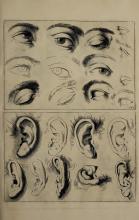
|
|
| Lairesse - Principles - Page 32 |
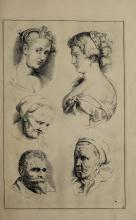
|
|
| Lairesse - Principles - Page 33 |
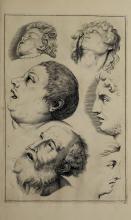
|
|
| Lairesse - Principles - Page 34 |
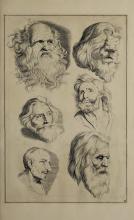
|
|
| Lairesse - Principles - Page 35 |
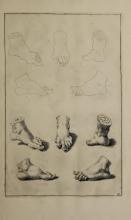
|
|
| Lairesse - Principles - Page 36 |
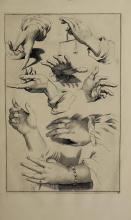
|
|
| Lairesse - Principles - Page 37 |
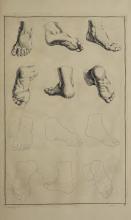
|
|
| Lairesse - Principles - Page 38 |

|
|
| Lairesse - Principles - Page 39 |

|
|
| Lairesse - Principles - Page 40 |
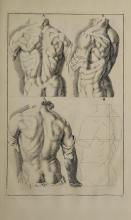
|
The image contains anatomical illustrations with labels 'A' and 'B'. They show detailed depictions of the human back, likely intended as artistic references. These are part of Gerard de Lairesse's 1719 book on drawing principles. |
| Lairesse - Principles - Page 41 |

|
|
| Lairesse - Principles - Page 42 |
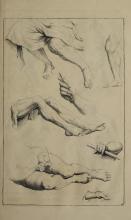
|
|
| Lairesse - Principles - Page 43 |
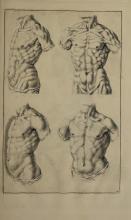
|
This page in the book "The Principles of Drawing" by Gerard de Lairesse features anatomical drawings of the male torso. It offers detailed views from different angles, focusing on the presentation of muscle structure. The illustrations likely serve an educational purpose for artists studying human anatomy. |
| Lairesse - Principles - Page 44 |
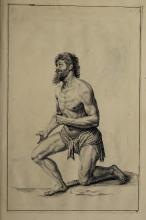
|
|
| Lairesse - Principles - Page 45 |
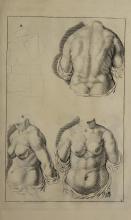
|
The text on the page only consists of the letter 'A.' The page primarily contains anatomical drawings for artistic instruction. These illustrations likely demonstrate how to construct and detail human anatomy, focusing on the back and torso. |
| Lairesse - Principles - Page 46 |

|
|
| Lairesse - Principles - Page 47 |
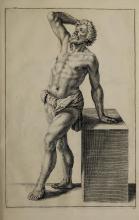
|
|
| Lairesse - Principles - Page 48 |
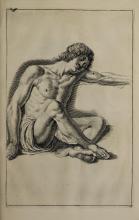
|
|
| Lairesse - Principles - Page 49 |
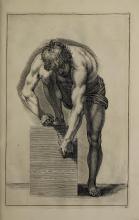
|
The page contains an illustration typical of Gerard de Lairesse’s instructional style, demonstrating the human form's musculature and posture. The image complements the book's theme of teaching drawing techniques. It reflects the classical artistic emphasis on anatomy and the representation of action. |
| Lairesse - Principles - Page 50 |
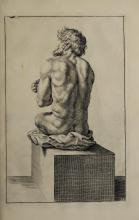
|
|
| Lairesse - Principles - Page 51 |
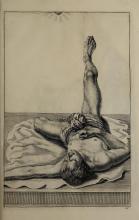
|
|
| Lairesse - Principles - Page 52 |
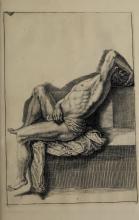
|
|
| Lairesse - Principles - Page 53 |
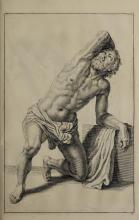
|
|
| Lairesse - Principles - Page 54 |
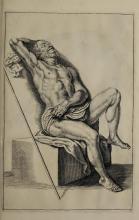
|
|
| Lairesse - Principles - Page 55 |
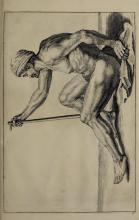
|
|
| Lairesse - Principles - Page 56 |
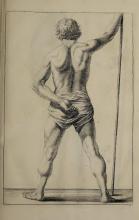
|
|
| Lairesse - Principles - Page 57 |

|
|
| Lairesse - Principles - Page 58 |
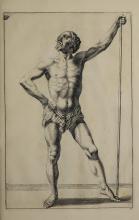
|
|
| Lairesse - Principles - Page 59 |

|
|
| Lairesse - Principles - Page 60 |
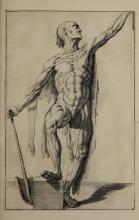
|
|
| Lairesse - Principles - Page 61 |
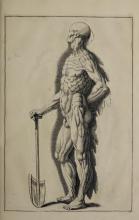
|
|
| Lairesse - Principles - Page 62 |
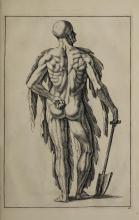
|
|
| Lairesse - Principles - Page 63 |
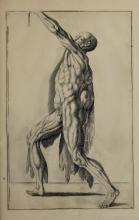
|
|
| Lairesse - Principles - Page 64 |

|
|
| Lairesse - Principles - Page 65 |
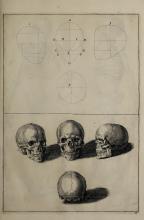
|
The text includes figure numbers and labels corresponding to a series of diagrams showing steps in a drawing method. These steps involve using anatomical reference points, labeled A to K, to guide artists in constructing a head. The images provide both schematic and realistic views of skull anatomy for educational purposes. |
| Lairesse - Principles - Page 66 |
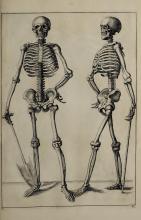
|
|
| Lairesse - Principles - Page 67 |
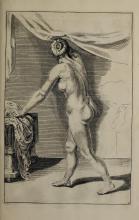
|
|
| Lairesse - Principles - Page 68 |
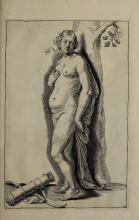
|
|
| Lairesse - Principles - Page 69 |
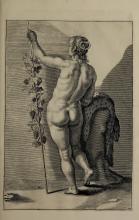
|
|
| Lairesse - Principles - Page 70 |
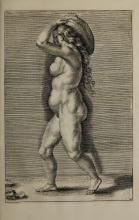
|
|
| Lairesse - Principles - Page 71 |
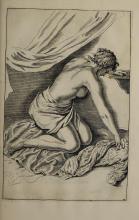
|
|
| Lairesse - Principles - Page 72 |
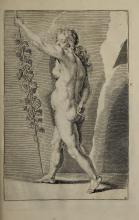
|
|
| Lairesse - Principles - Page 73 |
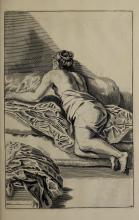
|
|
| Lairesse - Principles - Page 74 |
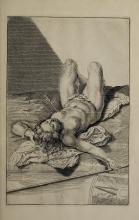
|
|
| Lairesse - Principles - Page 75 |
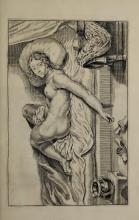
|
|
| Lairesse - Principles - Page 76 |
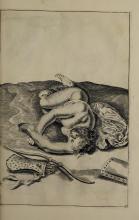
|
|
| Lairesse - Principles - Page 77 |
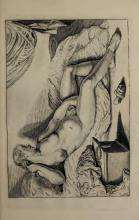
|
|
| Lairesse - Principles - Page 78 |
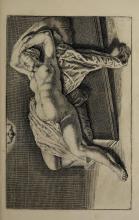
|
|
| Lairesse - Principles - Page 79 |
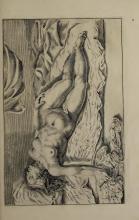
|
|
| Lairesse - Principles - Page 80 |
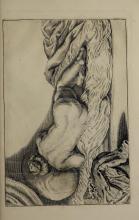
|
|
| Lairesse - Principles - Page 81 |
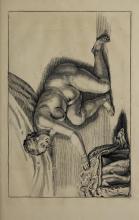
|
|
| Lairesse - Principles - Page 82 |
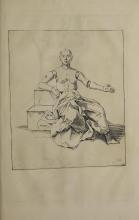
|
|
| Lairesse - Principles - Page 83 |
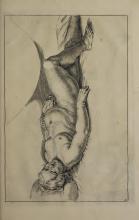
|
|
| Lairesse - Principles - Page 84 |
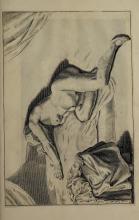
|
|
| Lairesse - Principles - Page 85 |
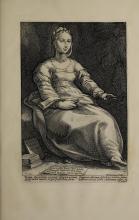
|
The text is a Latin dedication to Sir Sacchelo Servo, Duke of Bavaria, dated 1524, highlighting his commendable attributes and deeds. It praises his role in marking off letters and emphasizes his contributions to literature and scholarship. The inscriptions reflect the artistic and intellectual admiration of the Duke by E. Eshus. |
| Lairesse - Principles - Page 86 |
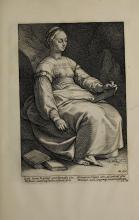
|
The text is a poetic tribute to Clio, the muse of history, who ensures that the deeds of leaders and heroes are remembered and endure over time. It emphasizes the preservation of history through storytelling, allowing heroic actions to be immortalized and protected from the ravages of time. |
| Lairesse - Principles - Page 87 |
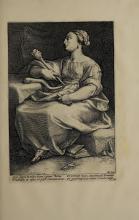
|
The text is about Thalia, the Muse of comedy, who delights in laughter and love following banquets. It also mentions jocular battles in a meadow and implies playing childish games in silence. Thalia's association with festivity and artistic inspiration is highlighted. |
| Lairesse - Principles - Page 88 |

|
The text is a Latin inscription referring to Melpomene, the muse of tragedy, along with characters from Greek mythology like Thyestes, Procne, Electra, and Eryphila. These figures are associated with tragic and painful narratives. The inscription evokes elements of Greek drama through imagery of the tragic boot (cothurno). |
| Lairesse - Principles - Page 89 |
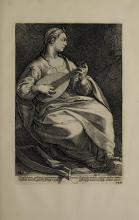
|
The text below the image is a Latin inscription referencing Terpsichore, the Muse of dance and choral song, with a symbolic mention of her playing a lyre. It praises the eternal and soft charms of music, highlighting its emotional impact and ability to stir tender emotions. The invocation of Greek mythology reflects the artistic and poetic tradition of the time. |
| Lairesse - Principles - Page 90 |
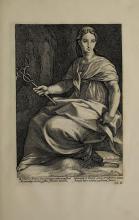
|
The text praises the Muse Polyhymnia, known for her eloquent speech and graceful gestures. She is depicted as the source of rhetoric and song, enhancing her status among the muses. This depiction highlights her joyful nature in singing hymns and paeans. |
| Lairesse - Principles - Page 91 |
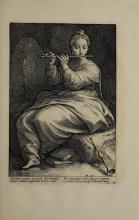
|
The text references Euterpe, the Greek muse of music, highlighting her musical talents with the flute. It mentions her connection to Aganippe and the inspired tunes that lead the knowledgeable path. This poem blends mythology with the artistic theme of musical inspiration. |
| Lairesse - Principles - Page 92 |
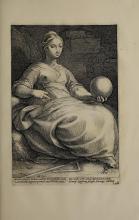
|
The text is in Latin, describing a figure named Callirhe who uses a compass line to determine the world. It includes poetic references to Erato delighting in Phoebus' song, and the wind directions Eurus, Boreas, and Notus, which relate to subtext about navigation and the classical elements. |
| Lairesse - Principles - Page 93 |

|
The text accompanying the image describes Urania, the muse of astronomy, illustrating her role in showing the movements of the heavens and stars. It poetically references various celestial phenomena, including Venus, Orion, and comets. These elements emphasize the importance of celestial understanding in art and science. |
| Lairesse - Principles - Page 94 |
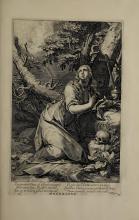
|
The text is a meditative contemplation on youth and beauty, referencing Venus and Mary Magdalene. It contrasts the allure of earthly pleasures with spiritual transformation. The engraving was made in 1609 by C.R. |
| Lairesse - Principles - Page 95 |
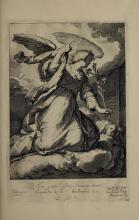
|
The text translates a Latin biblical verse, "Hail, full of grace, the Lord is with you: blessed are you among women," from Luke 2. The passage is part of the angelic salutation to Mary. The scene likely represents the Annunciation. |
| Lairesse - Principles - Page 96 |
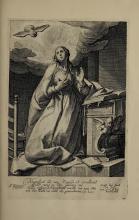
|
The text is a Latin biblical excerpt from the Magnificat, spoken by Mary in the Gospel of Luke. It expresses Mary's joy and humility as she acknowledges the greatness of God and her role as His servant. The passage highlights the idea of future generations recognizing her blessedness. |
| Lairesse - Principles - Page 97 |
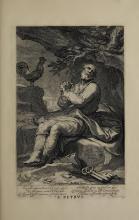
|
The text is a poem describing Saint Peter's denial of Christ after the rooster crowed three times. It reflects on his solitude and eventual acceptance in the presence of the Lord. Saint Peter is acknowledged for his significant role in Christianity. |
| Lairesse - Principles - Page 98 |
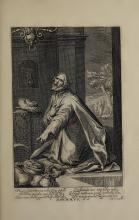
|
The text is a confession by Zacchaeus, acknowledging his sins and expressing a willingness to give his wealth to the poor. It reflects themes of repentance and redemption. This scene is likely inspired by the biblical story of Zacchaeus. |
| Lairesse - Principles - Page 99 |
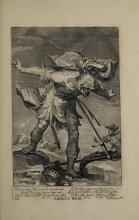
|
The text beneath the illustration describes King Saul's journey of ignoring prophet Samuel's laws, waging war with many faults, and ultimately realizing his responsibility. It culminates in Saul's act of killing himself, reflecting on his struggle and leadership failures. The translation notes further explain the historical and literary context, emphasizing Saul's tragic end and his symbolic actions. |
| Lairesse - Principles - Page 100 |
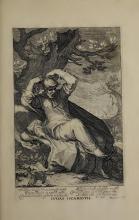
|
The extract contains a lament of Judas Iscariot, pondering divine forgiveness and his impending self-destruction. It reflects on moral struggle and consequences, evoking themes of repentance and doom. The text alludes to religious motifs consistent with 18th-century religious beliefs. |
| Lairesse - Principles - Page 101 |
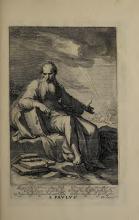
|
The text urges readers to delve deeper into the divine writings of Paul, suggesting that true understanding lies beyond the literal words. It speaks of spiritual enlightenment, granted through divine favor, and equips the believer to face spiritual challenges. The imagery and symbolism indicate a religious and moral call to action. |
| Lairesse - Principles - Page 102 |
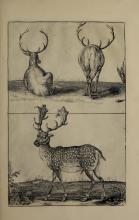
|
The page contains detailed drawings of deer. The illustrations focus on different poses, providing visual studies for artists. These are likely tools for learning from "The Principles of Drawing" by Gerard de Lairesse. |
| Lairesse - Principles - Page 103 |
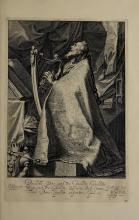
|
The image contains a biblical Psalm passage inviting believers to sing praises to God, the King of all the earth. The Latin text is inscribed beneath an engraving depicting a musician playing the harp, with a theological emphasis on understanding and celebration. The artwork credits J. Bloemaert as the inventor and mentions a privilege from 1658. |
| Lairesse - Principles - Page 104 |
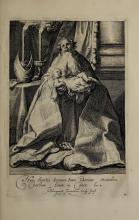
|
The text is a Latin excerpt from the Gospel of Luke, often referred to as the "Nunc dimittis," expressing a servant's peaceful departure in accordance with God's word. It references the work of an artist, credited as Bloemaert. The scene likely describes a religious or biblical event. |
| Lairesse - Principles - Page 105 |
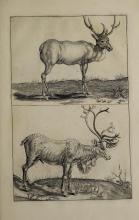
|
|
| Lairesse - Principles - Page 106 |
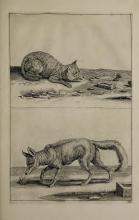
|
|
| Lairesse - Principles - Page 107 |
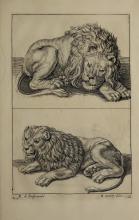
|
The text credits two artists for the engravings: R. de Vorst as the engraver and R. Saverij as the illustrator. The images are likely used as examples in a book on drawing techniques. This highlights the collaborative efforts in art production during the 18th century. |
| Lairesse - Principles - Page 108 |
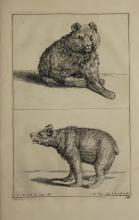
|
The text credits R. Saveri with drawing the images, and R. de Vos as the engraver for the King of England. The inscriptions denote the artists and their roles, reflecting the collaborative nature of producing engravings in that era. |
| Lairesse - Principles - Page 109 |
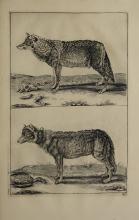
|
|
| Lairesse - Principles - Page 110 |
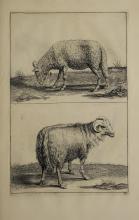
|
|
| Lairesse - Principles - Page 111 |
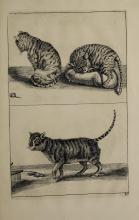
|
|
| Lairesse - Principles - Page 112 |
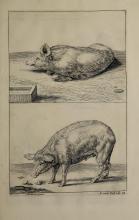
|
The text credits two individuals involved in creating the illustrations: R. Savery as the painter and R. Vander Vin Sr. as the sculptor or engraver. These two figures contributed to the production of the pig illustrations in the book. The use of "pinxit" for the painter and "sculpt" for the engraver is noted, which is common in art documentation. |
| Lairesse - Principles - Page 113 |
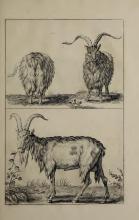
|
|
| Lairesse - Principles - Page 114 |

|
|
| Lairesse - Principles - Page 115 |
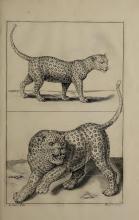
|
|
| Lairesse - Principles - Page 116 |
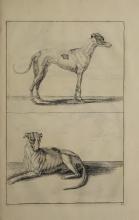
|
|
| Lairesse - Principles - Page 117 |

|
|
| Lairesse - Principles - Page 118 |
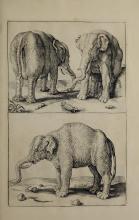
|
|
| Lairesse - Principles - Page 119 |
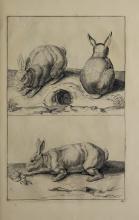
|
|
| Lairesse - Principles - Page 120 |
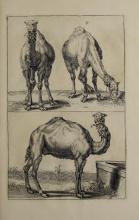
|
|
| Lairesse - Principles - Page 121 |
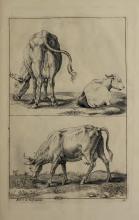
|
The page contains illustrations of cows and a brief text crediting "Robert de Vost" as the inventor. The text is likely indicating the creator of the illustrations. The illustrations are detailed images used for learning animal anatomy and drawing. |
| Lairesse - Principles - Page 122 |
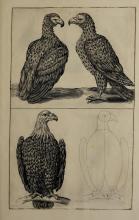
|
|
| Lairesse - Principles - Page 123 |
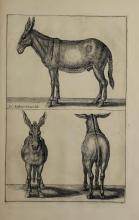
|
The text identifies the artist and the individual who drew the illustration. It is a credit for the donkey illustration on the page. |
| Lairesse - Principles - Page 124 |
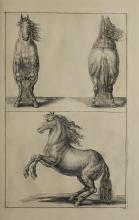
|
|
| Lairesse - Principles - Page 125 |
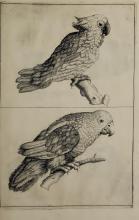
|
There is no text to summarize as the page contains only images. |
| Lairesse - Principles - Page 126 |
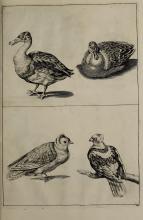
|
This page contains the number 104 and features illustrations of four birds. There are two ducks and two smaller birds, drawn with detailed engraving techniques typical of the period. The images may have been used for studying avian anatomy or drawing techniques. |
| Lairesse - Principles - Page 127 |
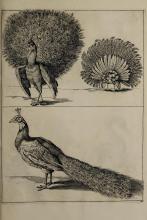
|
|
| Lairesse - Principles - Page 128 |
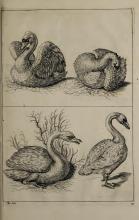
|
A signature 'HK drew' appears on the page with artistic renderings. The page displays intricate drawings of swans by Gerard de Lairesse. The illustrations are part of his 1719 book on drawing techniques. |
| Lairesse - Principles - Page 129 |
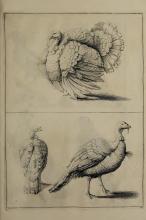
|
|
| Lairesse - Principles - Page 130 |
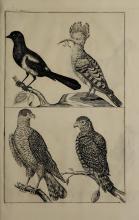
|
|
| Lairesse - Principles - Page 131 |
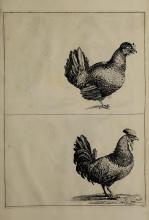
|
|
| Lairesse - Principles - Page 132 |
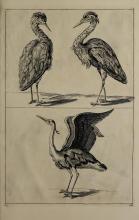
|
|
| Lairesse - Principles - Page 133 |
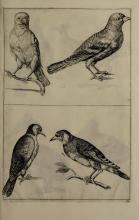
|
|
| Lairesse - Principles - Page 134 |
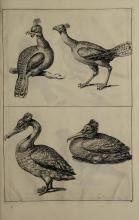
|
|
| Lairesse - Principles - Page 135 |

|
This page features illustrations of birds. There is no accompanying text to summarize. |
| Lairesse - Principles - Page 136 |
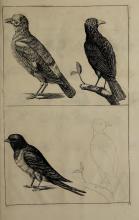
|
The image is labeled as 'Plate 126' and contains drawings related to art instruction. These illustrations are likely part of Gerard de Lairesse's book. They show techniques for drawing birds, including completed and outlined forms. |
| Lairesse - Principles - Page 137 |
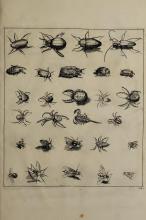
|
|
| Lairesse - Principles - Page 138 |
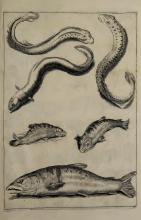
|
|
| Lairesse - Principles - Page 139 |
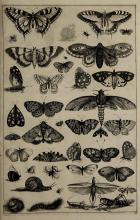
|
|
| Lairesse - Principles - Page 140 |

|
|
| Lairesse - Principles - Page 141 |
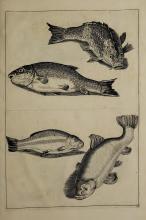
|
|
| Lairesse - Principles - Page 142 |
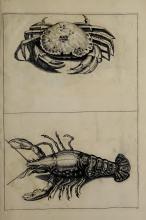
|
|
| Lairesse - Principles - Page 143 |
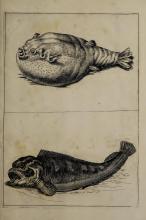
|
COPYRIGHT © 2025 STUDY DRAWING. ALL RIGHTS RESERVED.